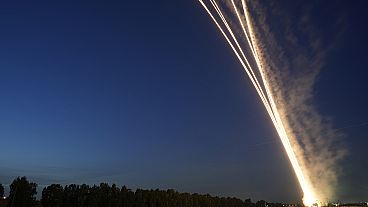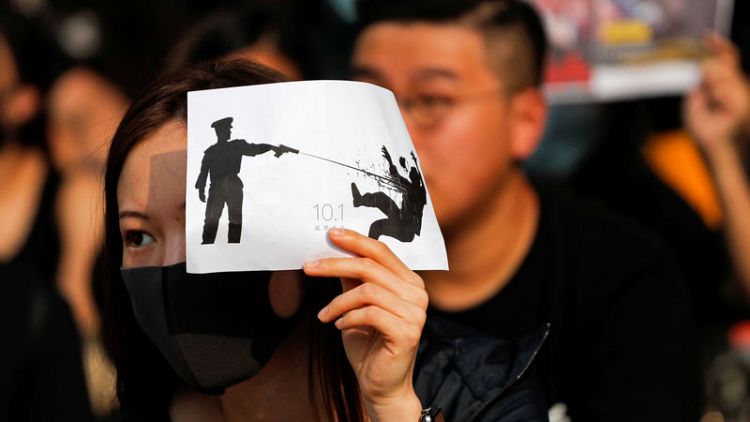LONDON/SINGAPORE (Reuters) - The policeman raises his pistol in a melee of protesters, the gun barrel flashes and a young man falls onto his back clutching his chest – 60 seconds of video caught on camera at the height of pro-democracy protests in Hong Kong.
Far from the scene, Reuters journalists in London and Singapore watched the shooting, which was captured by three amateur camera operators. The Reuters teams were looking for any detail - perhaps a shop or street sign in the background - that could help establish the authenticity of the footage, and that it was filmed when and where the operator said it was.
Reuters has its own TV crews and photographers covering the protests that have rocked Hong Kong since the spring. But with rapidly developing events, the first pictures in Hong Kong and elsewhere are often caught on smartphones, action cams and other devices by people at the scene.
News publishers around the world want those kinds of images from breaking stories. But Reuters will only licence and distribute them when editors have taken steps to ensure they are genuine.
"We go to great lengths to source and authenticate this material," said Hazel Baker, the head of Reuters' User Generated Content (UGC) team. "It's a detailed process that takes time and persistence."
Click here https://reut.rs/2VZHSJb for the video put out by Reuters Television.
There was no doubt the shooting occurred during protests on Oct 1. Scores of witnesses reported it and authorities acknowledged that a protester had been hit and wounded - a key moment in the confrontation that triggered more protests.
The first clips posted on social media platforms showed fragments of the action, seconds-long snatches without context. The UGC team decided to wait for video showing a fuller sequence of events. And they found three such sequences posted online by groups of student journalists, many of whom have contributed reliable footage for Reuters in the past.
Yi Shu Ng, on the UGC team in Singapore, and Baker in London contacted the students on phone and Facebook messenger.
"They were all very forthcoming with information, specifically the place where the protester was shot, who the protester was, and what happened," said Ng.
"We cross-checked the info with what we saw on the videos - specifically with Google Street View and user-submitted photos of the shop where the incident happened - to verify that this was indeed where the incident occurred."
Footage of each stage in the action - the shot, the fall, the police rushing in - was compared with other bits of film caught from different angles to check that none of it had been staged or in any way altered by a single camera operator.
Details of old photos posted by tourists at the same street corner - the signage of a restaurant, the layout of the menu posted outside, a department store in the background - matched details in the protest film.
After more than five hours of frame-by-frame checking, Ng, Baker and other colleagues finally felt they had gathered enough evidence of the images' authenticity and hit publish.
(Writing by Andrew Heavens; Editing by Raju Gopalakrishnan)


